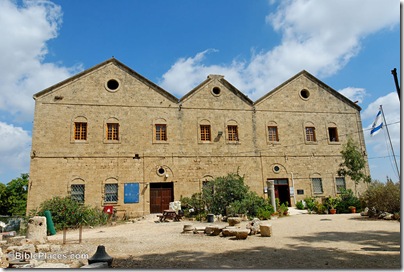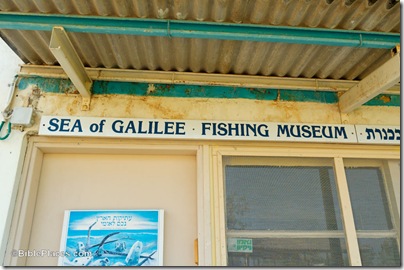Book and the Spade has posted its latest program, this one an interview with Eric Cline, entitled “Pseudo-archaeologists and the lost Arks.” The host, Gordon Govier, tells me that he has written an article about a similar subject in the May issue of Christianity Today. Cline has a related book that came out last year: From Eden to Exile: Unraveling Mysteries of the Bible.
The Book and the Spade radio program now features an interview with Jerome Murphy-O’Connor, author of The Holy Land: An Oxford Archaeological Guide (mentioned before here). There are two parts, each about 15 minutes each. Part two is currently posted, but this link should get you part one.
If you’re interested, grab them now as the mp3 files are archived relatively quickly and I don’t think the podcast link is currently working.
Did Jesus ever imagine that a few hundred yards from where he told the disciples that Christians would be known by their love that Jewish authorities would break up a brawl among his followers?
And not just once, as “brawls are not uncommon at the church.”
Israeli police rushed into Jerusalem’s Church of the Holy Sepulchre to break up fist fights between dozens of Greek and Armenian worshippers on Orthodox Palm Sunday, witnesses said.
Some 20 officers intervened after Armenian worshippers threw a Greek Orthodox priest out of the church, sparking a free-for-all, they said.
Several worshippers then started beating the police officers with palm fronds they were holding for the Palm Sunday celebrations that mark the return of Jesus to the Holy City a week before he was crucified.
After the incident, dozens of members of Jerusalem’s Armenian community marched from the church to the Old City’s police headquarters in protest at the detention of two Armenians.
Brawls are not uncommon at the church, which is shared by various branches of Christianity, each of which controls and jealously guards part of site — considered one of the holiest in Christianity.
Precisely in order to prevent such disturbances, two Muslim families have been entrusted for the past 800 years with opening and closing the gates of the church, a cavernous labyrinth of chapels and crypts built on the site where many Christians believe Jesus was crucified and buried.
The full story is here.
- Tagged Jerusalem, Not an April Fool's Joke
The Jerusalem Post has a short article on the work of the Council of Restoration and Preservation of Historic Sites in Israel. Most of those singled out are kibbutz museums, which are usually ignored by tourists. If you live in Israel, or plan to be back for the third – or thirtieth – time, you might find a few sites to add to your list.
For a small country, Israel has an amazing number of historic sites and museums. But then, the entire country is a museum and open history book in itself. There hardly seems to be a place, certainly in the central and northern parts of the country, where there isn’t a sign at the roadside pointing to some historical site from any time period ranging from the Biblical to recent history….
Some years ago, an overseas visitor commented after a trip through the Galilee that northern Israel seemed to him to be one huge park and picnic ground!…
Founded over 20 years ago, the council maintains a long list’s worth of sites and monuments and, working industriously alongside other organizations and special interest groups, has successfully restored important sites throughout the country dedicated to protecting Israel’s rich heritage….
Under the motto “Our future, inspired by our past,” the council identifies, restores, conserves and protects major heritage buildings and sites associated with Israel’s rebirth, beginning in 1860, the time the first settlement outside the walls of Jerusalem’s Old City was established.
The rest is here.
- Tagged Museums
Arutz-7 has a helpful photo essay showing preparations for the Passover in Jerusalem. Subjects including cleaning out leaven, kashering pots, making matza, and an “educational” sacrifice.
- Tagged Jerusalem
Recently I noted an article about a planned animal sacrifice in Jerusalem. This event was controversial because 1) there is no temple or altar in Jerusalem today; 2) killing an animal makes some people mad.
Friends in Jerusalem went to the Old City that day and saw a guy they suspected of carrying a ritual knife in his briefcase and followed the guy through a wild maze of streets in pursuit. It turned out they followed the right guy. They filmed the service.
We talked about the appropriateness of putting this online. The 5-minute video is as graphic as it gets. More and more people today don’t realize that meat doesn’t originate at a grocery store. They have little concept of an animal being raised and then slaughtered. Furthermore, almost no one in the Western world has ever sacrificed an animal for religious purposes.
I think, however, that is precisely why this *graphic* video should be shown. We read about sacrifice in the Bible but we don’t really understand what that means. We read passages that talk about the “life being in the blood,” but those are just words that we don’t really consider. We “know” that the wages of sin are high, but we don’t get the life lesson that the ancient Israelites received every year.
The point of sacrifice was simply this: you deserve to die because of your sin. This animal is dying in your place. Watching the priest slice his throat and watching the blood drain out drove the point home much better than reading a chapter of Leviticus.
Today New Testament believers know that the blood of bulls and goats is not enough to take away sin. But I think that we can often just take for granted Jesus’ death in our place. We don’t think about his innocent blood draining away because we can’t conceptualize it. We don’t always appropriate the idea of substitute because we’ve never seen a living object die in our place. But our loss can be this: sin is easy because forgiveness (we think) is cheap.
The video was made by SourceFlix Productions. Instead of dubbing over the scene with English commentary, they chose to include some explanatory text below. Don’t watch this video while eating, and if you’re thinking about showing your children, watch it yourself first.
Passover begins Saturday at sundown.
Related: for photos and explanation of the Samaritan Passover, see BiblePlaces.com (modern photos) or LifeintheHolyLand.com (19th century photos and text). Several years ago I wrote an article about a visit to the Samaritan Passover sacrifice (En Gedi Resource Center).
- Tagged Jerusalem
Search
About the BiblePlaces Blog
The BiblePlaces Blog provides updates and analysis of the latest in biblical archaeology, history, and geography. Unless otherwise noted, the posts are written by Todd Bolen, PhD, Professor of Biblical Studies at The Master’s University.
Subscribe
Tags
10th Century
American Colony Photos
Analysis
Antiquities Trade
Dead Sea
Dead Sea Scrolls
Discoveries
Egypt
Excavations
Forgery
Galilee
Greece
Holidays
Israel's Coast
Italy
Jerusalem
Jezreel Valley
Jordan
Jordan Rift
Judah
Lebanon
Lectures
Mediterranean Islands
Mesopotamia
Museums
Negev
New Exhibits
Persia
Philistines
Photo Resources
Picture of the Week
Pseudo-Archaeology
Resources
Sad News
Samaria
Shephelah
Syria
Technology
Temple Mount
Tomb of Jesus
Tourism
Travels
Turkey
Weather
Weekend Roundup
Links
Notice
As an Amazon Associate we earn from qualifying purchases. In any case, we will provide honest advice.

